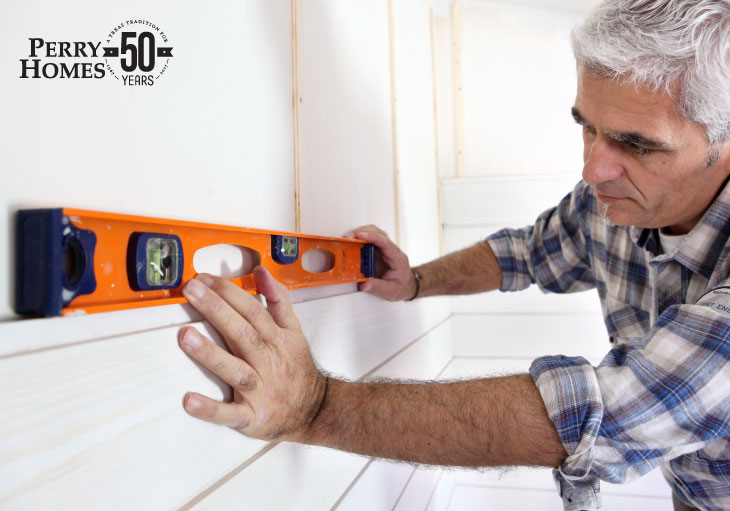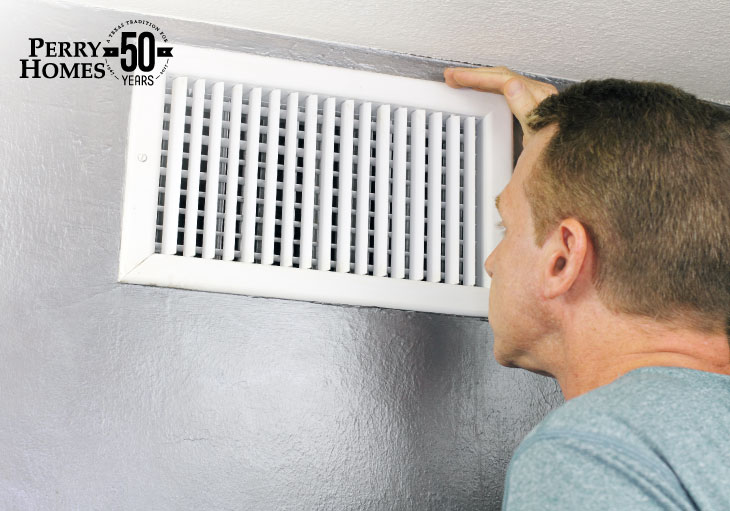
Home Inspection Process Tips and Tricks
The search for the perfect home is full of highs and lows, especially when it comes to dollar amounts. Between closing costs, transaction fees and other additional expenses littered throughout the homebuying process, it is easy to feel bogged down by frivolous expenses. But possibly the best money you will spend during this process is one of those miscellaneous expenses—the home inspection. Home inspection costs are minimum compared are small change compared to other home buying expenses. Even most premium inspections do not exceed $500, but the information and knowledge gained through them is priceless.
A home inspection is one of the final steps in the home buying process, and it usually occurs once the seller or home builder has accepted the buyer’s offer, and the offer should be contingent on the results of a home inspection. This does not mean it is unimportant nor that it can be rushed through. The home inspection process takes time and effort on your part, but once it is complete you can rest easy knowing what you are getting and what you can expect from your home in terms of maintenance and repairs down the line. Most new home builders provide a home inspection. Perry Homes, for example, conducts numerous inspections throughout the building process to ensure exceptional quality. However, if you are buying a resale home, check out the following tips that are very important to have in mind before and during the home inspection process.
Know what you want and what you are getting
The first thing to know is that there are several types of inspections. Generally, buyers want a standard inspection that checks for major damages or problems with the home. The classic option is a home inspection—the house is inspected and, based on the findings, the buyer can request that the seller repair issues highlighted in the inspection or credit the buyer a certain amount to do the work themselves. They also have the option to walk away from the sale if the damages are too costly or dangerous for their liking.
A general inspection, meanwhile, looks for the same potential problems as a home inspection and produces a similar report, but the buyer cannot use this information to negotiate with the seller—the inspection report is for the buyer’s information only. Most general inspections also allow the buyer to walk away from the sale if they choose.
Specialty inspections for issues such as mold, radon and pest are also available, but these usually require additional costs and specialty inspectors—your average home inspector will not be able to perform these inspections.
Courtesy tip: Your inspector is not your contractor; they might point out problem areas, but they cannot fix them.

Choose your home inspector with care
A home inspection is such an important part of the home buying process. You want to make sure you find an inspector that is qualified and professional, as well as someone you feel comfortable with. Inspectors must be certified, so an important step in researching potential inspectors is confirming their certification through reputable organizations like the American Society of Home Inspectors and the National Association of Certified Home Inspectors. Both organizations have search engines to help you identify certified inspectors in your area—check out ASHI’s here and NACHI’s here.
You might also ask your real estate agent for inspector referrals. If they have an established history of working in the area, chances are they have dealt with numerous inspectors and have a small list of trusted referrals to draw from. Use your best judgement when it comes to first or second-party referrals.
Finally, request a sample inspection report, which an inspector should be happy to provide. This will give you an idea of the inspector’s process and attention to detail, not to mention give you a chance to familiarize yourself with the official inspection report paperwork.

Perform your own home inspection beforehand
While you are most likely not a certified inspector, you are the person who is going to live in this house. You want to be sure your personal concerns are acknowledged and—hopefully—put at ease. So grab a couple simple tools—a screwdriver, flashlight, binoculars, step stool and, if possible, a receptacle tester—and perform your own home inspection.
Visually inspect walls and ceilings for discoloration that could indicate water damage, check the water pressure in bathrooms by running the sink or tub and flushing the toilet, test electrical outlets if you have access to a receptacle tester and use your binoculars to check the exterior of the home—in particular the roof—for signs of curling, cracking or cupped edges in the shingles. Check out this home inspection checklist for a detailed list of inspection tips.
Here’s a pro tip: Look for newer cosmetic fixes, as well, like new paint or fixtures, even a well-placed rug. These could be masking underlying damages to the property.
Once you have noted your personal concerns about the house, bring them to your inspector’s attention ahead of time. Let them know you have specific questions about certain elements of the home and point them out. Be your own advocate!
Be present mentally and physically at the inspection
Most home inspectors will welcome your presence on the day of the inspection—they might even expect it. Let the inspector know you would like to come, and be prepared on the day to direct them to the issues you found in your pre-inspection. Remember, you have knowledge to offer in this situation; the inspector has never been to this property before, but you know your way around.
Arrive at the inspection ready to engage. Of course your inspector will provide you with a full report after the inspection, but it does not hurt to take notes as the inspection is in progress. Ask specific questions about how something works or the nature of the suspected damage. If you do not understand a comment your inspector makes, do not be afraid to ask! This is where feeling comfortable with the inspector you have chosen truly pays off. When you feel comfortable and respected by a professional, you are more likely to seek information you need without feeling embarrassed or unsure.
Know what to do with the finished product
The ultimate inspection report is not just a preview of a home’s potential maintenance and repair issues—it is a bargaining tool. If your inspection revealed major issues such as problems with the heating system or a damaged roof, you should include these issues in your post-inspection negotiations. If the inspection did not turn up major problems, feel free to include small issues and see what the seller is willing to cover. Make a list of surface problems you would like fixed by the seller in order of importance, but be willing to drop a few of your bottom seed issues.
Does the home inspection process feel a little less daunting? Spread that feeling by sharing this blog with other potential home buyers!
